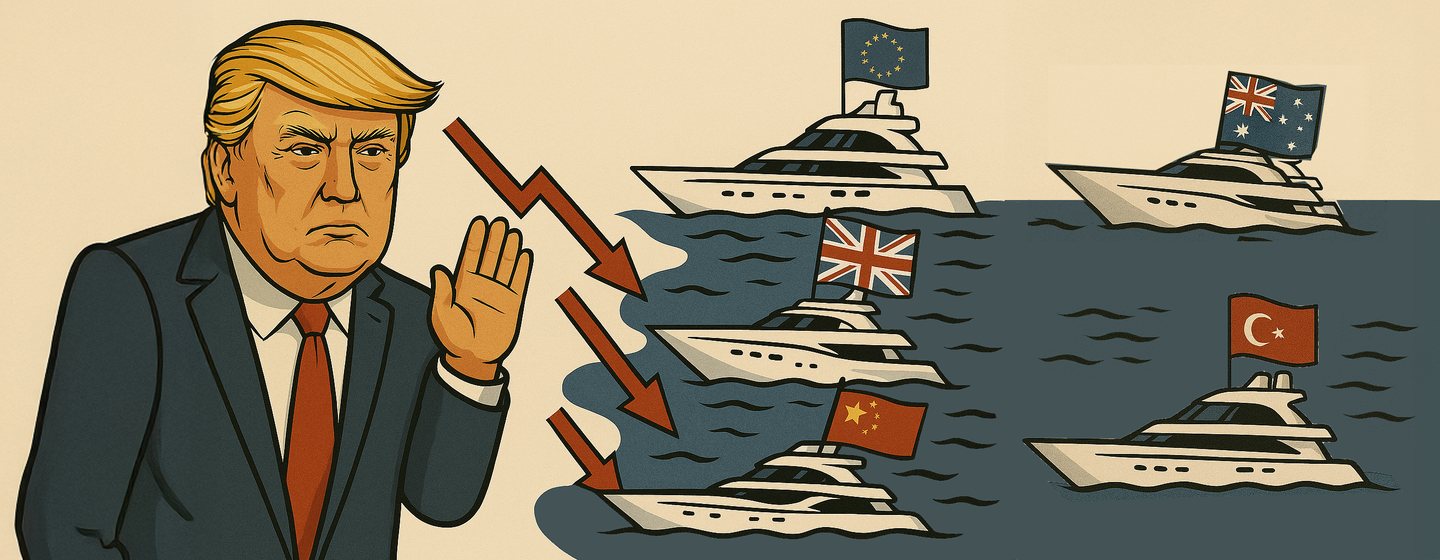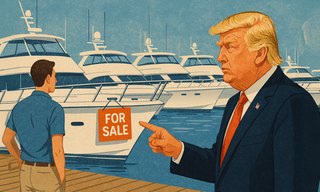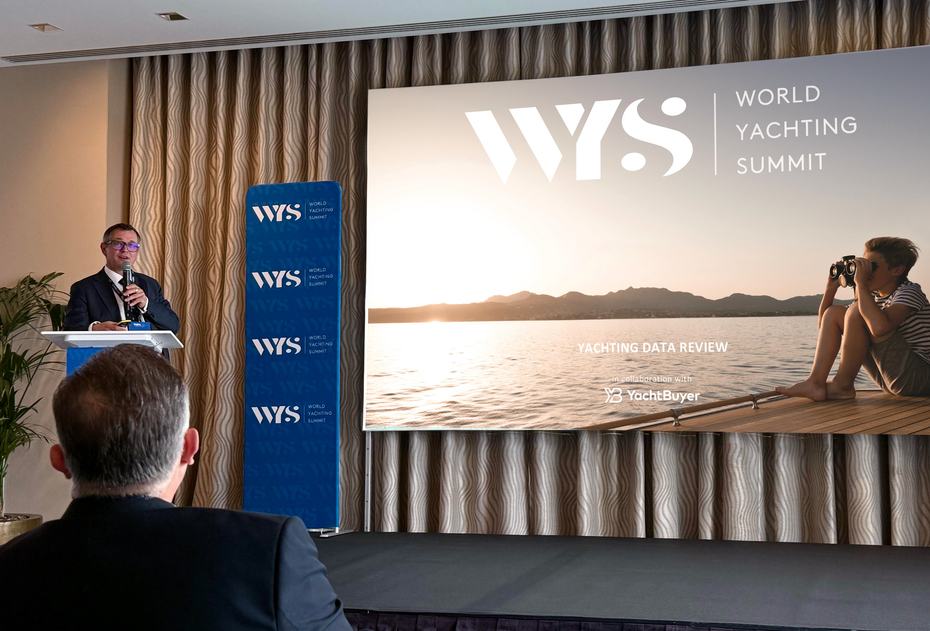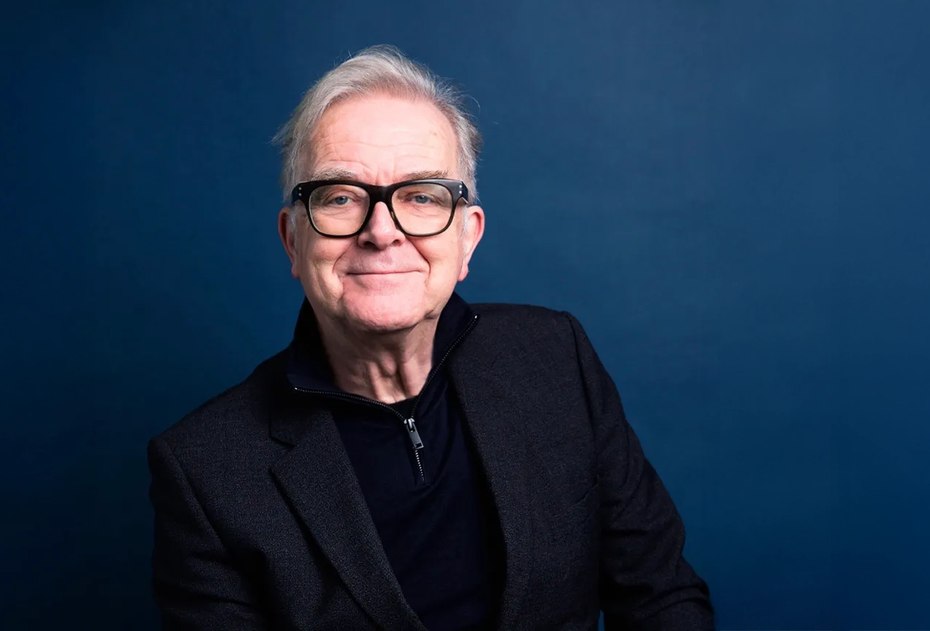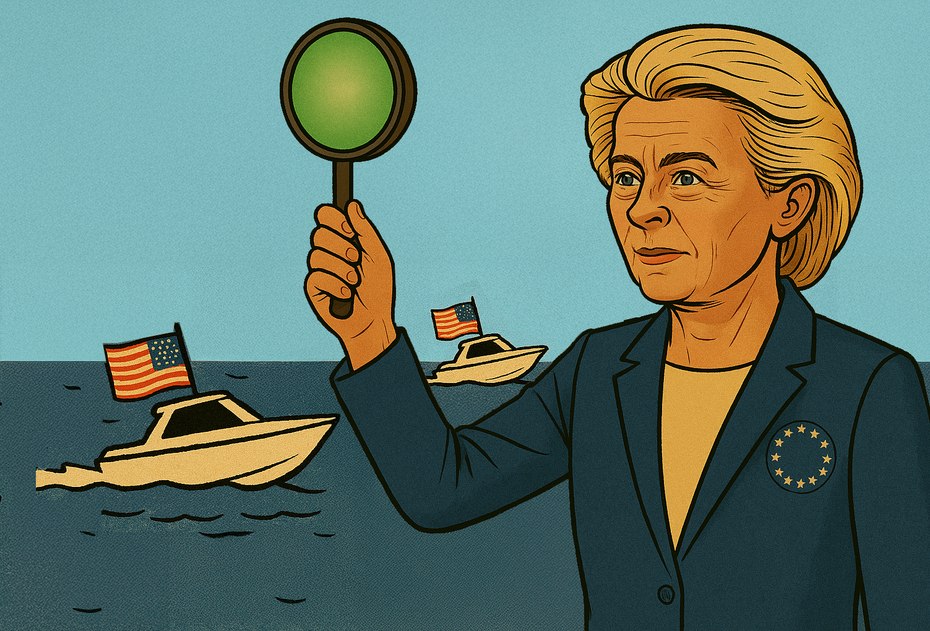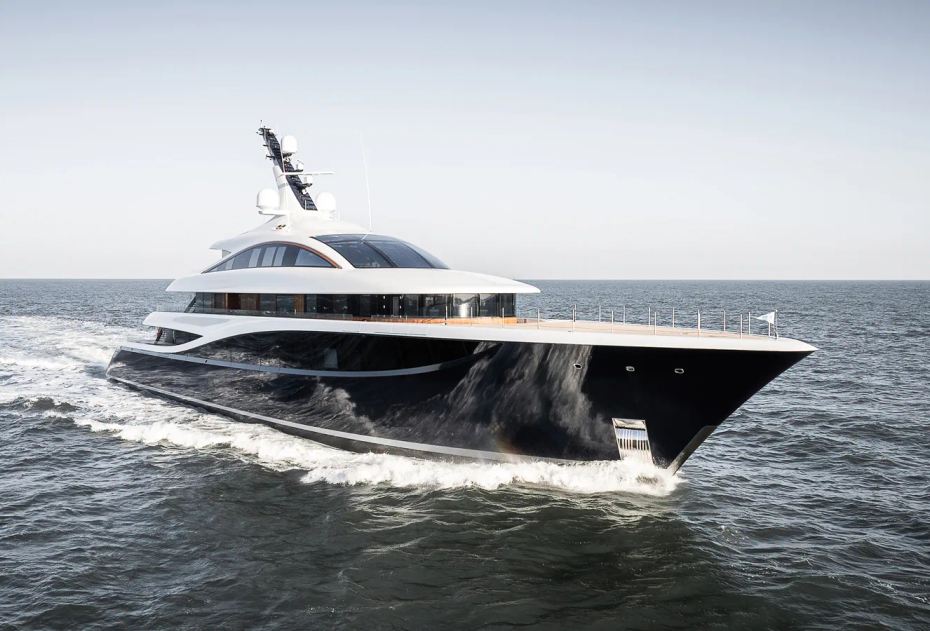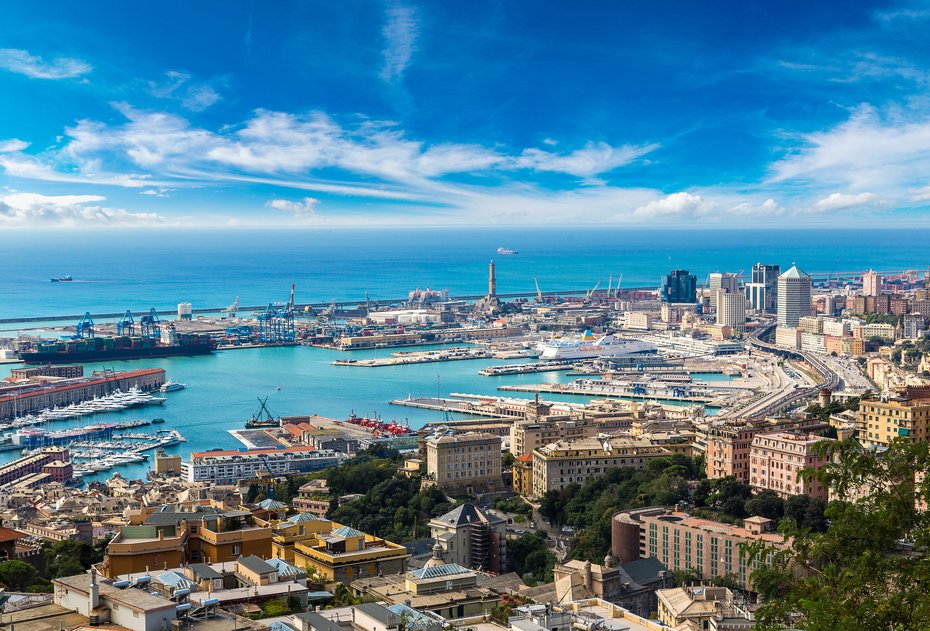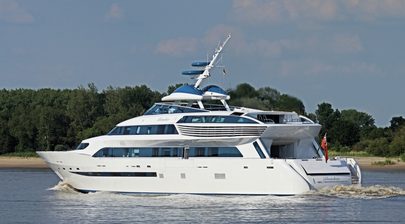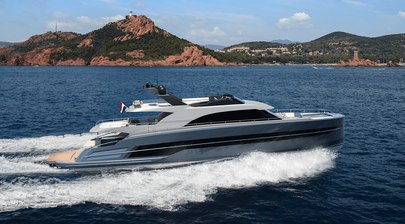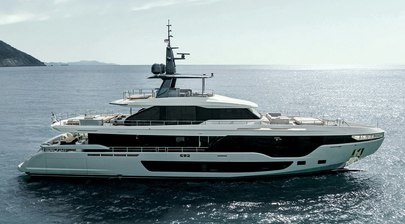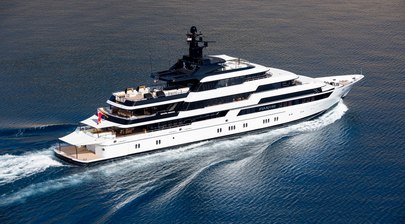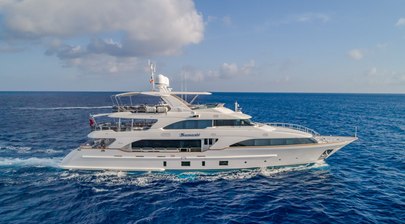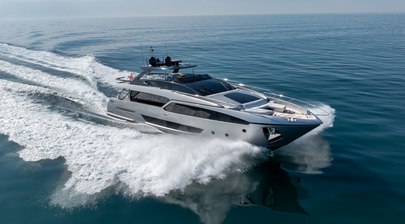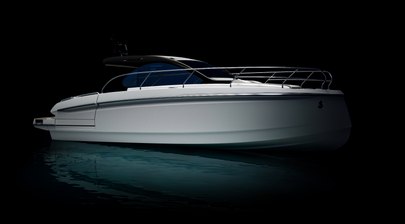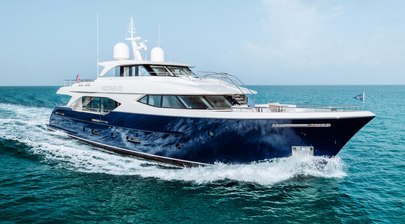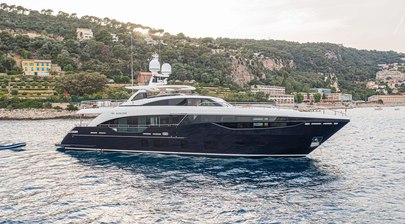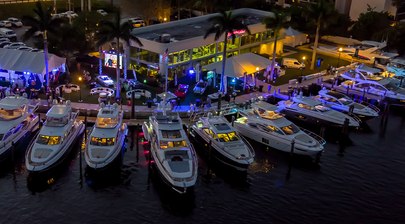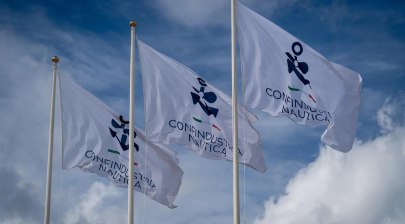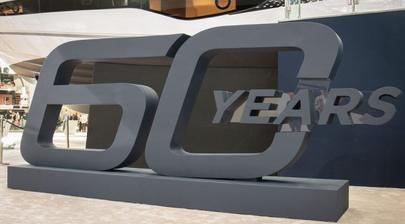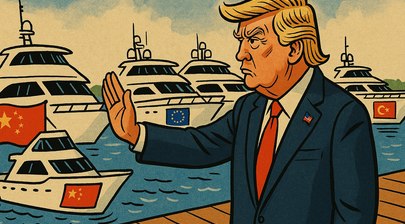On April 2, President Trump announced sweeping trade measures imposing a universal 10% tariff on all imports—with elevated tariffs targeting key trade partners: 20% for the European Union, 32% for Taiwan, and 54% for China.
The administration claims these measures are necessary to “rectify large and persistent annual U.S. goods trade deficits,” which it views as a threat to national security and economic resilience. But for many in the recreational marine sector, the move could spell rising prices, disrupted supply chains, and a major rethink for American yacht buyers.
PBIBS 2025 featured over 100 yachts from top international shipyards. From Italian masterpieces and Dutch innovations to Taiwanese giants and American staples, the event now serves as a stark snapshot of who stands to lose or gain as the new tariffs take hold.
The Potential Losers: Yachts by Region of Manufacture
The categorization of 'losers' in this context refers specifically to the country of manufacture, not the branding or nationality of the yacht company. In today’s globalized production landscape, some brands—particularly those with American or British heritage—may produce their yachts in regions such as China or Southeast Asia. These production decisions significantly impact how each brand is affected by the new U.S. tariffs, which are applied based on manufacturing origin rather than corporate headquarters or marketing identity.
China (Tariffs up to 54%)
Yachts built in China now face the highest tier of tariffs—up to 54%, making them the most affected under the new regime. This includes Pearl Yachts, which despite being branded and marketed as a British luxury line, manufactures its models in China.
Chinese-built yachts from PBIBS 2025 include:
- Pearl Yachts (Pearl 95, Pearl 72)
Buyers of these models may encounter some of the steepest import penalties, making alternatives from lower-tariff regions or U.S. builders significantly more attractive by comparison.
Taiwan (Tariffs up to 32%)
Ocean Alexander and Horizon Yachts are among Taiwan’s most prolific builders—hugely popular in the U.S. for their build quality and value.
PBIBS Taiwan-built highlights:
- Ocean Alexander: 37L, 35R, 30R, 28L, 28E, 27R
- Horizon Yachts: FD100 Tri-Deck, E90, FD75, V77S
- Outer Reef Yachts – 900 Motoryacht, 830, 720, 610
If the full 32% tariff is enforced, Taiwanese brands face the sharpest competitive disadvantage among high-end builders—possibly pushing buyers toward similar U.S.-made options.
European Union: (Tariffs up to 20%)
EU brands have historically dominated U.S. waters with innovation and design flair. But with tariffs up to 20%, buyers of yachts from Italy, Germany, and the Netherlands may soon face steep price hikes.
Key affected builders from PBIBS 2025:
- Riva (130' Bellissima, 90’ Argo, Dolceriva) – Italy
- Pershing (GTX116, 9X) – Italy
- Ferretti Yachts (860) – Italy
- Sanlorenzo (SD118) – Italy
- Azimut (Magellano 30M, Grande 26M, Fly 72, Verve 48) – Italy
- Mulder (ThirtySix) – Netherlands
- Moonen (110 Mustique) – Netherlands
- Bluegame (BG74)– Italy
- Absolute (60 FLY) - Italy
These yachts, which traditionally range from $3 million to over $20 million, could now carry an additional 10–20% premium — potentially pricing some U.S. buyers out of the market or redirecting their interest toward domestic alternatives, British-built rivals, or models from other countries subject to the same 10% tariff.
United Kingdom (Universal 10% Tariff)
While no longer part of the EU, UK brands are not currently subject to elevated tariff tiers, meaning they fall under the standard 10% rate.
UK brands from PBIBS 2025 include:
- Sunseeker (Ocean 182, Predator 75, Manhattan 68, 95 Yacht)
- Princess Yachts (Y85, Y80, Y72, F65, V55, S65)
Though more competitively positioned than their EU counterparts, the added 10% cost may still give pause to price-sensitive American buyers.
Middle East & Asia-Pacific (Standard 10% Tariff)
Gulf Craft (UAE) and Maritimo (Australia) fall outside of the premium tariff brackets and will likely be taxed at the base 10% rate. While not tariff-free, they still remain more affordable than European or Taiwanese yachts in the current climate.
- Gulf Craft (Majesty 140, Majesty 120) -UAE
- Maritimo (M75, M600 Black Edition) -Australia
Turkey (Standard 10% Tariff)
Turkey has emerged as a competitive force in the yacht-building world, with shipyards like Numarine, Sirena Yachts, and Vicem gaining global recognition for their craftsmanship and pricing value. These yachts are built to high international standards and are increasingly favored by American buyers seeking European styling at more accessible price points.
Turkish-built yachts (notably absent at PBIBS 2025 but relevant to future shows):
- Numarine – 26XP, 37XP series
While not as heavily represented at PBIBS 2025, Turkish shipyards could benefit from the new tariff environment. With a standard 10% import tariff, they are now positioned more favorably than builders in the EU or Taiwan, and may attract increased attention from American clients seeking alternatives to higher-tariff models.
The Clear Winners: US -Built Yachts
If these tariffs are enacted fully, the biggest beneficiaries in the sub-50-foot (under 15-metre) market will be American yacht manufacturers, who avoid import duties altogether. With a potential 10–50% pricing advantage over foreign competitors, U.S. builders are well-positioned to capture increased domestic demand in this highly competitive segment.
US Shipyards on Display at PBIBS 2025:
- Westport Yachts – W117 (World Debut)
- Viking Yachts – 74C, 68C, 64C, 58C, 54C, 54ST
- Cruisers Yachts – 50 GLS, 46 Cantius, 42 GLS OB, 38 GLS OB, 34 GLS OB
- Scout Boats – 530 LXF, 425 LXF, 277 LXF, 215 XSF
- Tiara Yachts – EX60
These builders could see a surge in demand as consumers turn away from heavily tariffed imports. With strong dealer networks and ongoing product innovation, brands like Viking and Cruisers Yachts are poised for significant growth in 2025 and beyond.
In contrast, the 20 to 40-metre (65 to 130 feet) segment tells a different story. With few direct U.S.-made competitors in this size range, British yacht builders and manufacturers from other non-tariff countries are better positioned to benefit. As tariffs raise the cost of European imports, these brands could capture market share by offering comparable alternatives — potentially leveraging a 10–50% pricing advantage to entice U.S. buyers seeking value without sacrificing pedigree or quality.
What's Next for US Buyers?
With the dust still settling on the tariff announcement, one thing is clear: PBIBS 2025 may be remembered as the last "normal" international showcase before a major market realignment. As US buyers reassess their options, domestic yards are gearing up for what could be their most competitive moment in decades.
Additionally, these developments may prompt a broader industry reconsideration of supply chains. Some American yacht brands that previously moved manufacturing offshore—particularly to China or Southeast Asia—may now be incentivized to bring production back to US soil to avoid steep duties and restore pricing competitiveness.
Looking for your dream luxury yacht? Explore our complete collection of superyachts for sale worldwide, tracked in real-time by YachtBuyer MarketWatch. We scan the entire market to ensure access to all genuine listings, saving you time. Alternatively, you can also view all other yachts for sale.
